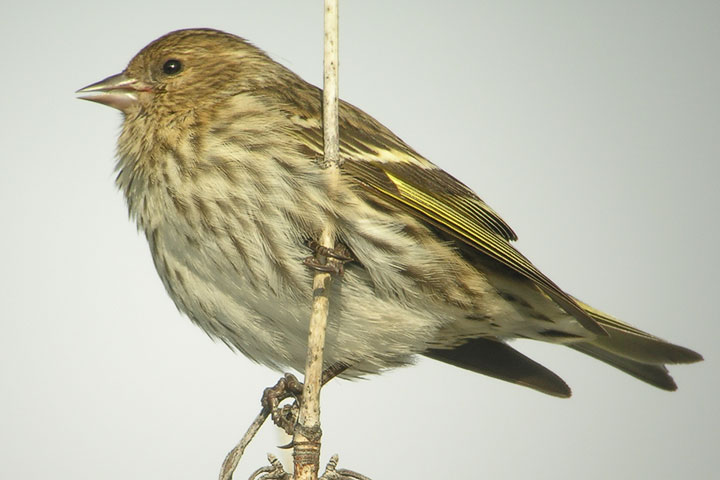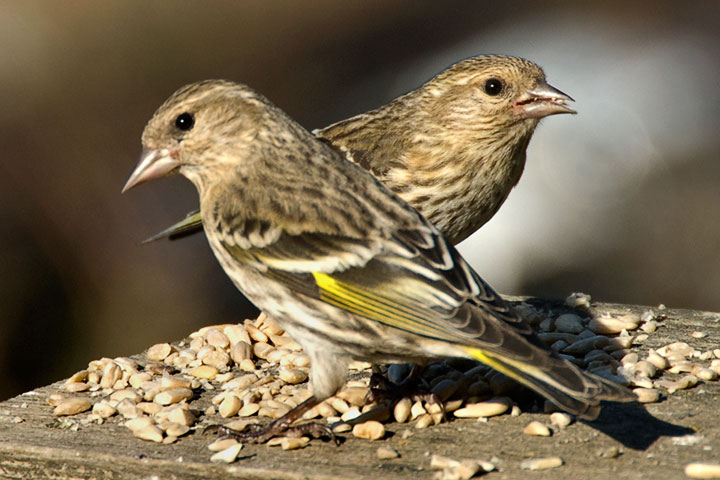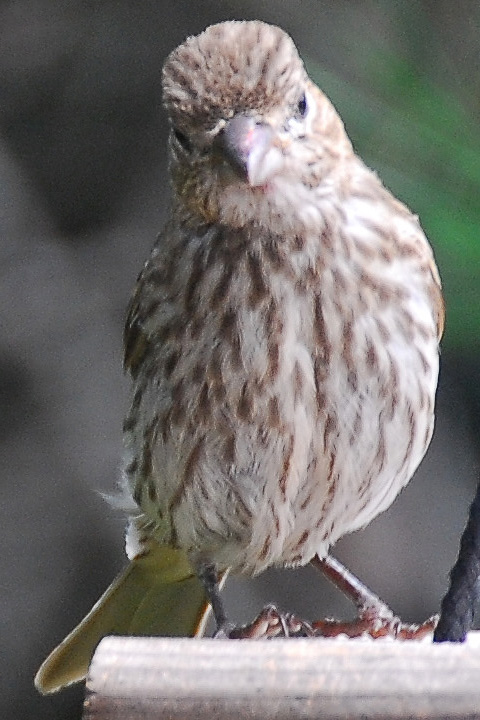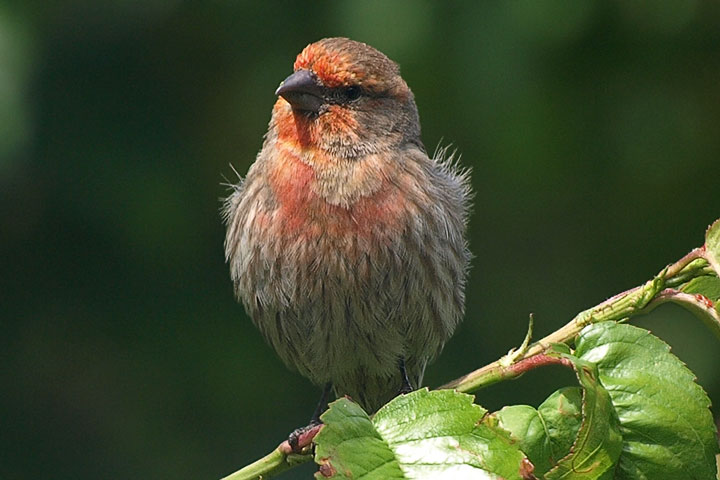Finches
These small, often colourful birds have a strong usually conical beak used for cracking the seeds, upon which they feed.
 The Pine Siskin has a streaked breast, rather like that of the house finch, but it has touches of yellow on the wings. It is found around here throughout the year, but is most common in the winter and spring when its raspy call, zztweeeez is a staple of the season.
The Pine Siskin has a streaked breast, rather like that of the house finch, but it has touches of yellow on the wings. It is found around here throughout the year, but is most common in the winter and spring when its raspy call, zztweeeez is a staple of the season.
 Two Pine Siskins at a bird feeder. The yellow streak on the wing and the notched tail is evident in the foreground bird.
Two Pine Siskins at a bird feeder. The yellow streak on the wing and the notched tail is evident in the foreground bird.
 The House Finch is a frequent visitor to bird feeders.
The House Finch is a frequent visitor to bird feeders.
 The House Finch is a frequent visitor to bird feeders.
The House Finch is a frequent visitor to bird feeders.
 The American Goldfinch is almost always seen in flocks feeding on the seeds of trees or smaller plants. In the winter (shown here), both sexes look nearly alike: a dull yellow-olive, darker above with dark wings bearing white bars. In the summer the male becomes has a bright yellow body and a black forehead.
The American Goldfinch is almost always seen in flocks feeding on the seeds of trees or smaller plants. In the winter (shown here), both sexes look nearly alike: a dull yellow-olive, darker above with dark wings bearing white bars. In the summer the male becomes has a bright yellow body and a black forehead.
 The male House Finch has a dusting of red on his head and breast.
The male House Finch has a dusting of red on his head and breast.  Doug Thorburn.
Doug Thorburn.
 The Pine Siskin has an undulating flight pattern: between rapid wing beats it coasts with folded wings. Yet, when one sees the siskin in a steep climb yet with folded wings, as here, it does look odd.
The Pine Siskin has an undulating flight pattern: between rapid wing beats it coasts with folded wings. Yet, when one sees the siskin in a steep climb yet with folded wings, as here, it does look odd.
Information from Wikipedia: Finches, American Goldfinches, Pine Siskin.
![]()